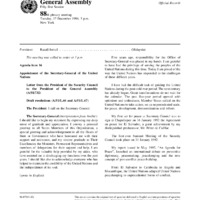Contents
Television and Campaigns
Television's impact on presidential campaigns
Consideration of television as part of the presidential campaign started as early as 1948. Media consultants were hired to take care of logistical concerns such as purchasing air time and supervise the set, but this role slowly evolved over time to have more control over the communication and advertising strategy. (Packaging the Presidency)
In 1952, Rosser Reeves from Ted Bates Agency convinced Eisenhower that television should be an integral part of the campaign. Reeves pitched Eisenhower Ansewrs America, 40 short advertisments desgined to show Eisenhower answering questions posed by ordinary citiens. (Museum of the Moving Image)
The agency enlisted tourists found near Radio City Music Hall to ask questions centered around the war in Korea, govermnet corruption, and communism, which were cited as voters' biggest concerns. Eisenhower then spent a day in the studio filming his answers separetely.
Eisenhower's opponent, Adlai Stevenson, opted for the traditional approach of 30-minute speeches, but these were aired later at night in order to affort the longer time slots. Eisenhower's shorts, played during prime hours, reached significantly more viewers. (The Living Room Candidate)
One of the most notorious ads came from Lyndon B. Johnson's campaign, using the threat of nuclear war as a fear-mongering tactic. The Republican National Committee contested the ad, which led to its withdrawal, but despite the ad only airing as a paid slot once, the controvery led to it being replayed over news and commentary programs.
Richard Nixon's 1968 and 1972 campaign focused on the importance of media in not only winning the presidency, but securing re-election. Throughout his presidency, Nixon and his advisors fought to manage his image in the media, sometimes bullying reporters to censure stories or limit the information broadcast to the public. Television was also vital in presenting the scripted narrative of Nixon's acheivements, such as Nixon's congratulatory phone call after the 1969 moon landing. (Museum for the Moving Image)

